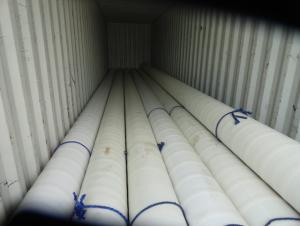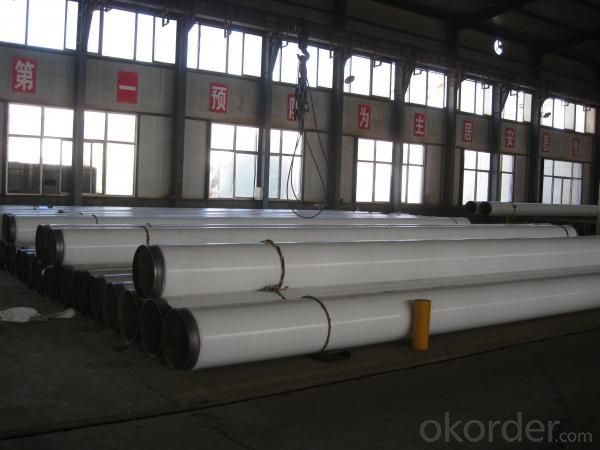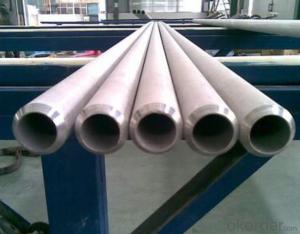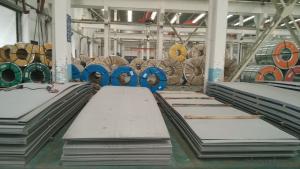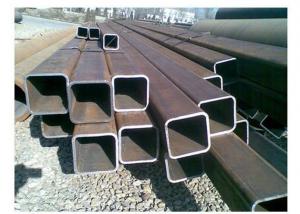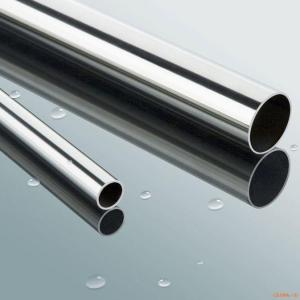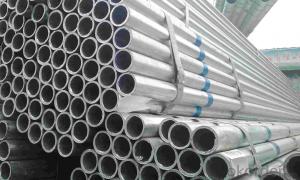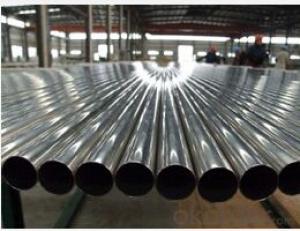3 Layers PP Steel Pipe
- Loading Port:
- Tianjin Port
- Payment Terms:
- TT or LC
- Min Order Qty:
- 50MT m.t.
- Supply Capability:
- 5000 Tons Per Month m.t./month
OKorder Service Pledge
OKorder Financial Service
You Might Also Like
Best price of 3 Layers PP Steel Pipe with good quality,
Specifications of 3 Layers PP Steel Pipe,
3L PP coated steel pipe ,1st layer is Fusion Bonded Epoxy,2nd layer is Polymer Adhesive ,3rd layer is Polypropylene.
|
order |
item |
performance |
test method. | |
|
2PE |
3PE | |||
|
1 |
peeling strength (N/cm)20±5℃ 50±5℃ |
≥35 ≥25 |
≥60 ≥40 |
DIN30670 |
|
2 |
cathodic disbanding(mm) (65℃,48h) |
≤15 |
≤10 |
SY/T4013 |
|
3 |
impact strength (J/mm) |
≥8 |
DIN30670 | |
|
4 |
bending resistant (2.5°) |
No cracking of polyethylene |
SY/T4013 | |
|
5 |
Pinhole (25kv) |
No leak |
DIN30670 | |
Standard: ASTM A106 ASME SA106
Grade:A B C
OD:21.3 - 406.4mm (1/2-16 inch)
WT:2-30mm
End:PE or Beveled
Chemical composition
|
Standard |
Grade |
Chemical composition(%) |
Mechanical Properties | |||||||||
|
C |
Si |
Mn |
PS |
Cr |
Mo |
Ni |
Cu |
V |
MPa |
| ||
|
ASTM A106 |
A |
≤0.025 |
≥ 0.10 |
0.27-0.93 |
≤0.35 |
≤0.04 |
≤0.15 |
≤0.04 |
≤0.04 |
≤0.08 |
≥ 330 |
≥ 205 |
|
B |
≤0.30 |
≥0.10
|
0.29-1.06 |
≤0.35 |
≤0.04 |
≤0.15 |
≤0.04 |
≤0.04 |
≤0.08 |
≥ 415 |
≥ 240 | |
|
C |
≤0.35 |
≥ 0.10 |
0.29-1.06 |
≤0.35 |
≤0.04 |
≤0.15 |
≤0.04 |
≤0.04 |
≤0.08 |
≥ 485 |
≥ 275 | |
Picturers of 3 Layers PP Steel Pipe,
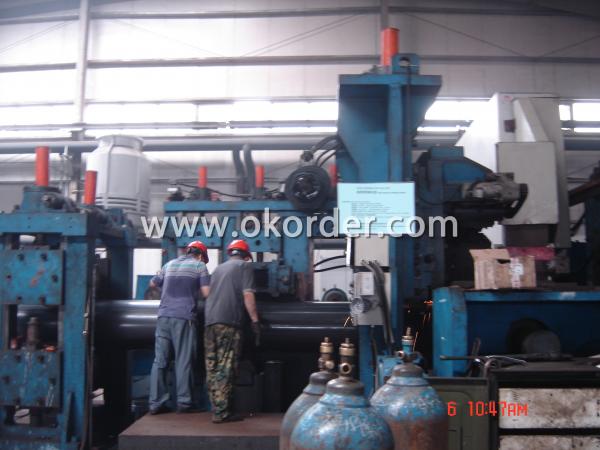
Careful inspetion of professional team to ensure good quality.
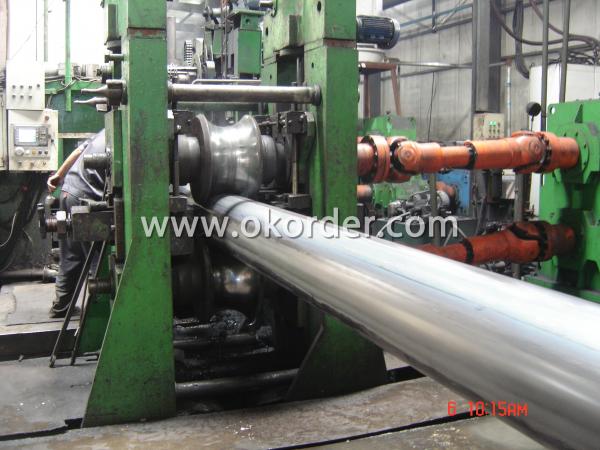
Almost finished products.
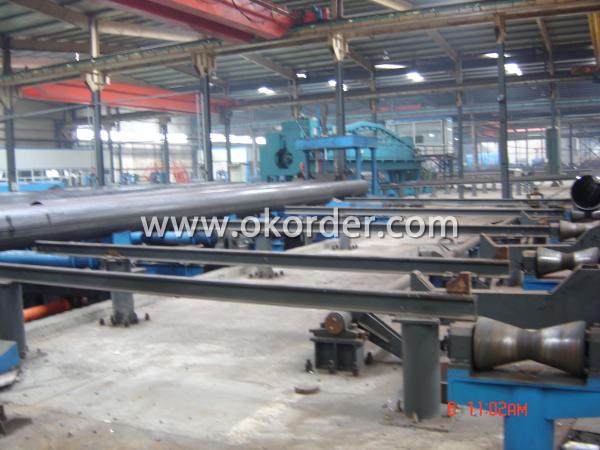
Last step for products.
Welcome to order 3 Layers PP Steel Pipe from us.
- Q: How do steel pipes handle water erosion?
- Steel pipes are highly resistant to water erosion due to their robust and durable nature. The smooth surface of steel pipes minimizes the formation of rust and corrosion, preventing water erosion from occurring. Additionally, steel pipes can withstand high water pressure and turbulent flow, further enhancing their ability to handle water erosion effectively.
- Q: How are steel pipes installed underground?
- Steel pipes are installed underground through a process called trenchless installation or open trench excavation. In trenchless installation, a drilling machine creates a tunnel underground, and the steel pipes are then inserted into the tunnel using a technique called pipe jacking or horizontal directional drilling. In open trench excavation, a trench is dug, and the steel pipes are laid in the trench before being covered with backfill material.
- Q: Seamless steel tube 89X4 meters, how heavy?
- According to the theory, each meter is 8.3844 kilograms. If you want to be precise, you'll lose your own weight.
- Q: What steel pipes are buried for outdoor heating pipes? Seamless or welded tube? Are there any rules for specific countries? Can use the seamed tube?
- Where outdoor heating pipes are buried, what steel pipe shall be referenced by the 11.1.2 code for installation of outdoor piping?:This chapter applies to the quality inspection and acceptance of the outdoor heating pipe network installation of the plant and the civil building group (residential area) with the saturation steam pressure not greater than 0.7MPa, and the hot water temperature not exceeding 130 degrees celsius.
- Q: Can steel pipes be coated for aesthetic purposes?
- Yes, steel pipes can be coated for aesthetic purposes. Coating steel pipes not only adds a visually appealing finish but also provides protection against corrosion and other environmental factors. There are various coating options available for steel pipes, such as powder coating, epoxy coating, and vinyl coating, among others. These coatings can be applied in different colors and textures to enhance the appearance of the pipes and complement the surrounding environment. Whether in industrial settings, architectural projects, or decorative applications, coating steel pipes can transform them into visually appealing elements while maintaining their structural integrity.
- Q: What are the different types of coatings used for external protection of steel pipes?
- There are several types of coatings commonly used for the external protection of steel pipes, including fusion bonded epoxy (FBE) coatings, three-layer polyethylene (3LPE) coatings, three-layer polypropylene (3LPP) coatings, and coal tar enamel (CTE) coatings. Each of these coatings provide different levels of corrosion resistance and durability, depending on the specific requirements of the project or application.
- Q: Can steel pipes be used for underground water supply pipelines?
- Yes, steel pipes can be used for underground water supply pipelines. Steel pipes are strong, durable, and resistant to corrosion, making them suitable for underground applications. They are often used for water supply pipelines due to their high strength and ability to withstand high pressure and load. Additionally, steel pipes can be welded together, ensuring leak-free connections, and are available in various sizes to accommodate different water supply needs.
- Q: Is the diameter of the steel tube indicated by the outer diameter by the wall thickness or by the inside diameter by the wall thickness?
- Seamless steel pipe specifications are: outer diameter, wall thickness, material. Three of these reflect its main features.Welding pipe specifications are: nominal diameter (internal diameter), galvanized or non plated
- Q: Fastener type steel pipe scaffold steel pipe wall thickness
- The scaffolding steel pipe should be specified with the current national standard "GB/T13793" or "straight seam welded steel pipe welded steel pipe for low pressure liquid delivery" GB/T3091 Q235 ordinary steel pipe; steel pipe steel quality should meet the requirements of current national standard grade Q235 steel "carbon structural steel" in GB/T700
- Q: Can steel pipes be used for structural purposes?
- Yes, steel pipes can be used for structural purposes.
1. Manufacturer Overview
| Location | Cangzhou,China |
| Year Established | 2010 |
| Annual Output Value | 200 million square meters |
| Main Markets | Main land;Middle East;Southeast Asia |
| Company Certifications | ISO 9001 |
2. Manufacturer Certificates
| a) Certification Name | |
| Range | |
| Reference | |
| Validity Period |
3. Manufacturer Capability
| a) Trade Capacity | |
| Nearest Port | Tianjin |
| Export Percentage | 41% - 50% |
| No.of Employees in Trade Department | less than 10 |
| Language Spoken: | English;Chinese |
| b) Factory Information | |
| Factory Size: | 20,000 square meters |
| No. of Production Lines | 2 |
| Contract Manufacturing | OEM Service Offered;Design Service Offered |
| Product Price Range | Average |
Send your message to us
3 Layers PP Steel Pipe
- Loading Port:
- Tianjin Port
- Payment Terms:
- TT or LC
- Min Order Qty:
- 50MT m.t.
- Supply Capability:
- 5000 Tons Per Month m.t./month
OKorder Service Pledge
OKorder Financial Service
Similar products
Hot products
Hot Searches
Related keywords


